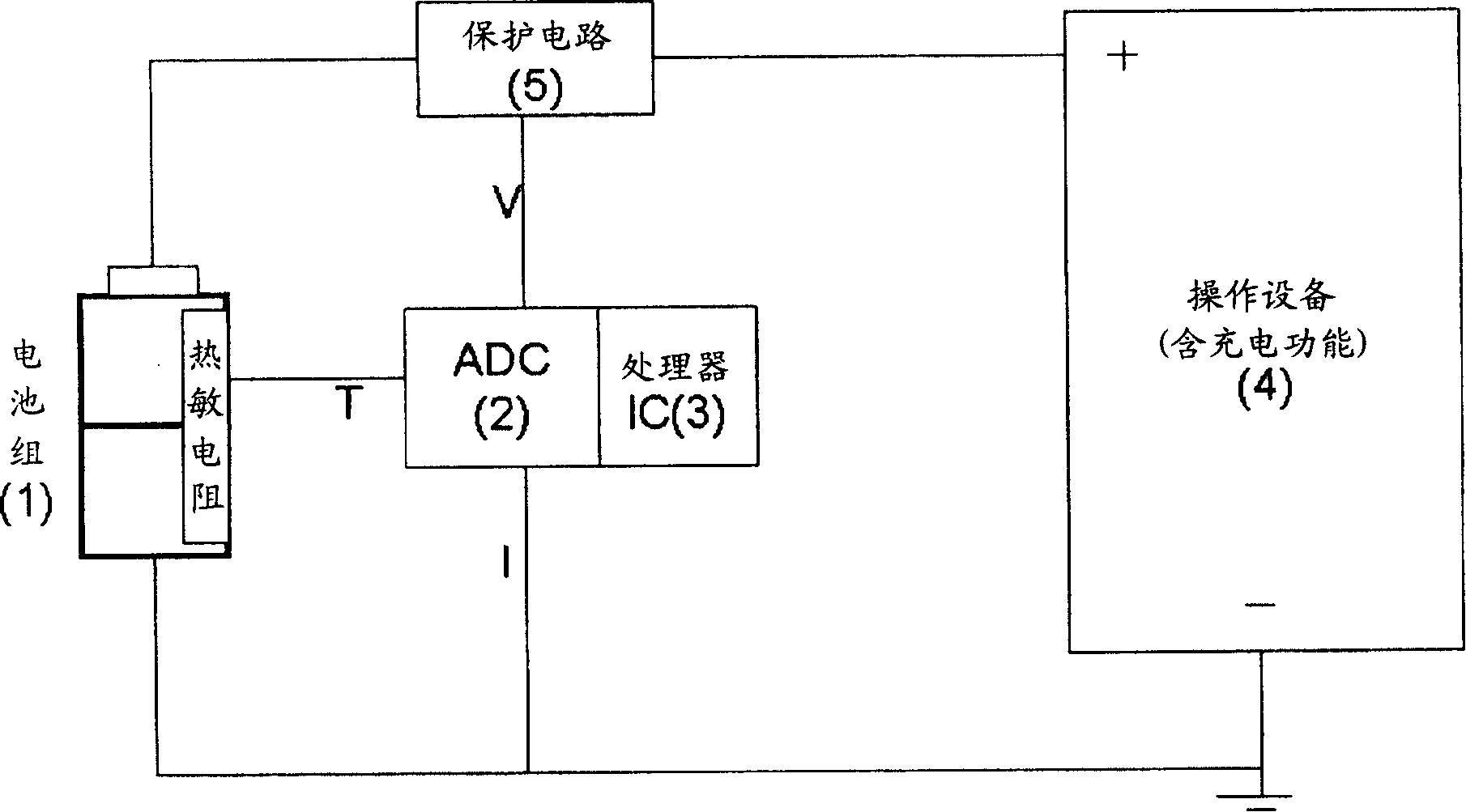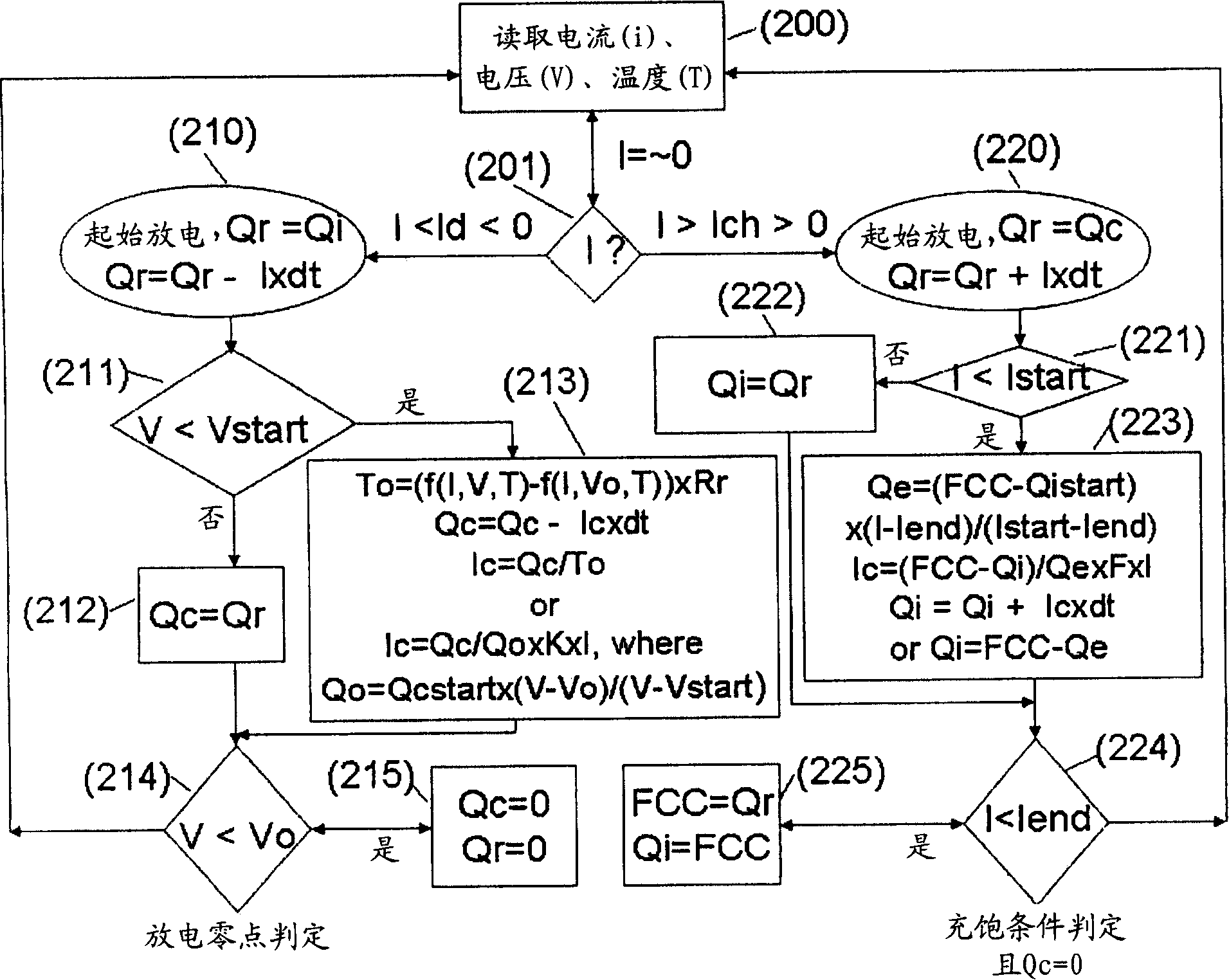Secondary cell capacity estimation method
A secondary battery and capacity technology, applied in the direction of measuring electrical variables, measuring electricity, measuring devices, etc., can solve problems such as easy interference with charging and discharging, residual capacity accuracy error, and inconvenient use
- Summary
- Abstract
- Description
- Claims
- Application Information
AI Technical Summary
Problems solved by technology
Method used
Image
Examples
Embodiment Construction
[0038] This method is based on figure 2 After reading the voltage (V), discharge current (I) and temperature (T) of the battery by the (200) step, it is judged by the current (I) according to the (201) step that the battery is charging (greater than a critical positive current), and the discharge (less than a critical negative current) The charging and discharging process and the calculation of the battery capacity are divided into the following two parts.
[0039] 1. Estimation of battery charging process capacity:
[0040] After entering (220) step charging process, set initial capacity Qr=Qc. In the charging process, the input capacity Qr=Qr+Ixdt is accumulated by the coulomb calculation method, and then enters the (221) step to judge whether the current is lower than a certain current correction initial value, if not, enters the (222) step to set the current capacity (Qi) is Qr; If then enter (223) step, design correction current Ic=(FCC-Qi) / QexIxF, wherein Qe=(I-Iend) / ...
PUM
 Login to View More
Login to View More Abstract
Description
Claims
Application Information
 Login to View More
Login to View More - R&D
- Intellectual Property
- Life Sciences
- Materials
- Tech Scout
- Unparalleled Data Quality
- Higher Quality Content
- 60% Fewer Hallucinations
Browse by: Latest US Patents, China's latest patents, Technical Efficacy Thesaurus, Application Domain, Technology Topic, Popular Technical Reports.
© 2025 PatSnap. All rights reserved.Legal|Privacy policy|Modern Slavery Act Transparency Statement|Sitemap|About US| Contact US: help@patsnap.com


